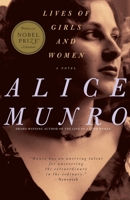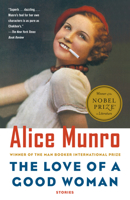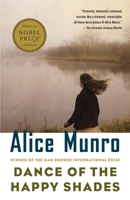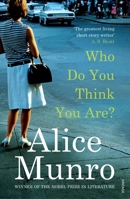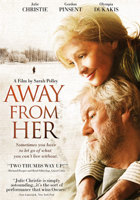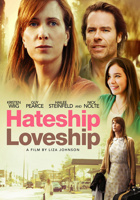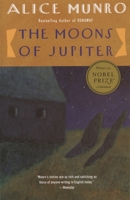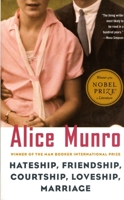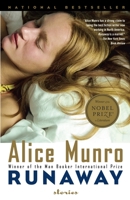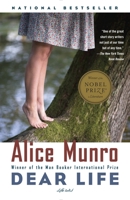Remembering Alice Munro
'I want the reader to feel something that is astonishing—not the "what happens" but the way everything happens.'
By Ashly Moore Sheldon • May 17, 2024
The uninitiated may mistakenly expect an Alice Munro story to be prim, refined, and reserved. But her readers know her work to be not just distinguished, but thrilling, fresh, and unexpected.
The Nobel Prize-winning author passed away this week at the age of 92. Often referred to as "the Canadian Chekhov" in reference to the illustrious Russian writer, Munro was well known for her collections of short fiction that explored the secret dreams, desires, and heartaches of ordinary life. Her stories, which often focused on the inner lives of women, were lauded for their novelistic scope, offering a surprising depth, drama, and intimacy.
In a career that spanned more than six decades, Munro published fourteen collections and amassed a raft of prestigious literary awards. Receiving her Nobel Prize in 2013, when she was 82, the Swedish Academy called her "a master of the contemporary short story," Her work has been cited as a major inspiration by many lauded authors such as Margaret Atwood, Salman Rushdie, Edna O'Brien, Anne Tyler, Jonathan Franzen, and Joyce Carol Oates.
A childhood on the outskirts of society
We lived in this kind of little ghetto where all the bootleggers and prostitutes and hangers-on lived. Those were the people I knew. It was a community of outcasts. I had that feeling about myself.
Alice Ann Laidlaw was born on July 10, 1931, in Wingham, Ontario, the oldest of three children. Her father, Robert, tried his hand at the exotic pursuit of raising foxes and minks, before later turning to turkey farming. Her mother, Anne, was a schoolteacher. When Anne developed Parkinson's disease, it fell to young Alice to care for her on her deathbed, an experience Munro revisited in several of her stories.
Munro's writing often mined the experiences of her own life. Frequently, her tales take place in her native corner of southwestern Ontario. The Lives of Girls and Women (1971) is a collection of linked stories that trace the coming-of-age of a character named Del, who quite resembles Munro.
Escape to college, then marriage
If I hadn’t gotten that scholarship to university, I would have dried up in Wingham. You can’t be alone too long with your hopes and ambitions. I would have become a weird spinster.
Munro left home to attend college after winning a two-year scholarship to the University of Western Ontario. She initially majored in journalism, but secretly she dreamed of writing fiction and later studied English. She supported herself in a variety of ways, including picking cotton and selling pints of her blood.
In 1951, the author married Jim Munro, a fellow student. She left school to move with him to Vancouver. It was during these years that Munro began to develop her craft, selling her first story to a radio program. Her story "Cortes Island" (from her 1998 collection, The Love of a Good Woman) depicts a young woman living in a basement apartment in Vancouver with her new husband as she struggles to become a writer.
Balancing motherhood and writing
In 20 years, I’ve never had a day when I didn’t have to think about someone else’s needs. And this means the writing has to be fitted around it.
Over the next decade, Munro had four daughters, one of whom died shortly after birth. She says she was happy keeping house and tending her children, but she was affronted by the notion that her domestic duties should be her whole focus and she wrote whenever she could. She has said that she gravitated toward short fiction because it was manageable amidst the daily work of "getting apple juice, answering the phone, and letting the cat in." In 1963, the family moved to Vancouver where they opened a bookstore.
In 1968, Munro published her first book, Dance of the Happy Shades, which won the first of her three Governor General’s Literary Awards, often described as the Canadian version of the Pulitzer Prize. Her subsequent winning titles were The Beggar Maid (1978), which was originally published as Who Do You Think You Are?, and The Progress of Love (1986).
Gaining international recognition
I think my stories have gotten around quite remarkably for short stories, and I would really hope that this would make people see the short story as an important art, not something you play around with until you'd got a novel written.
Munro divorced Jim Munro in 1972 and she returned to Ontario. In 1976, she married her second husband, Gerald Fremlin. From the 1970s to 2012, Munro published a short-story collection at least once every four years. Her stories gained wide renown, appearing regularly in popular journals and magazines, such as The New Yorker, The Atlantic Monthly, Harper's Magazine, and The Paris Review. The publicity-shy author limited her public appearances, preferring to focus on her work.
Munro continued to rack up major literary awards over the years, including the Man Booker International Prize in 2009. Her stories have also inspired several films, including Martha, Ruth and Edie (1988), Edge of Madness (2002), Away from Her (2006), Hateship, Loveship (2013) and Julieta (2016).
Her legacy
Everybody knows what a house does, how it encloses space and makes connections between one enclosed space and another and presents what is outside in a new way. That is the nearest I can come to explaining what a story is for me.
Munro was self-deprecating and humble about her successes. But critics hailed her as a technical genius, consistently praising the seamless construction of her stories. Her work has been described as revolutionizing the architecture of the short story, especially in regards to her ability to move through time.
She has been quoted as saying that her stories hinged on "a kind of primordial moment, an awful revelation, that you can’t do anything about," and she was masterful about how and when to unveil it. One observation of her writing is that she explores human complexities in an uncomplicated prose style, making her work both accessible and profound.
Here are a few more of our favorite Alice Munro collections:
- The Moons of Jupiter (1982)
- Hateship, Friendship, Courtship, Loveship, Marriage (2001)
- Runaway (2004)
- Dear Life (2012)
Follow us on Facebook, Twitter, and Instagram to connect with a community of readers, catch up on literary news, and get book recommendations.










